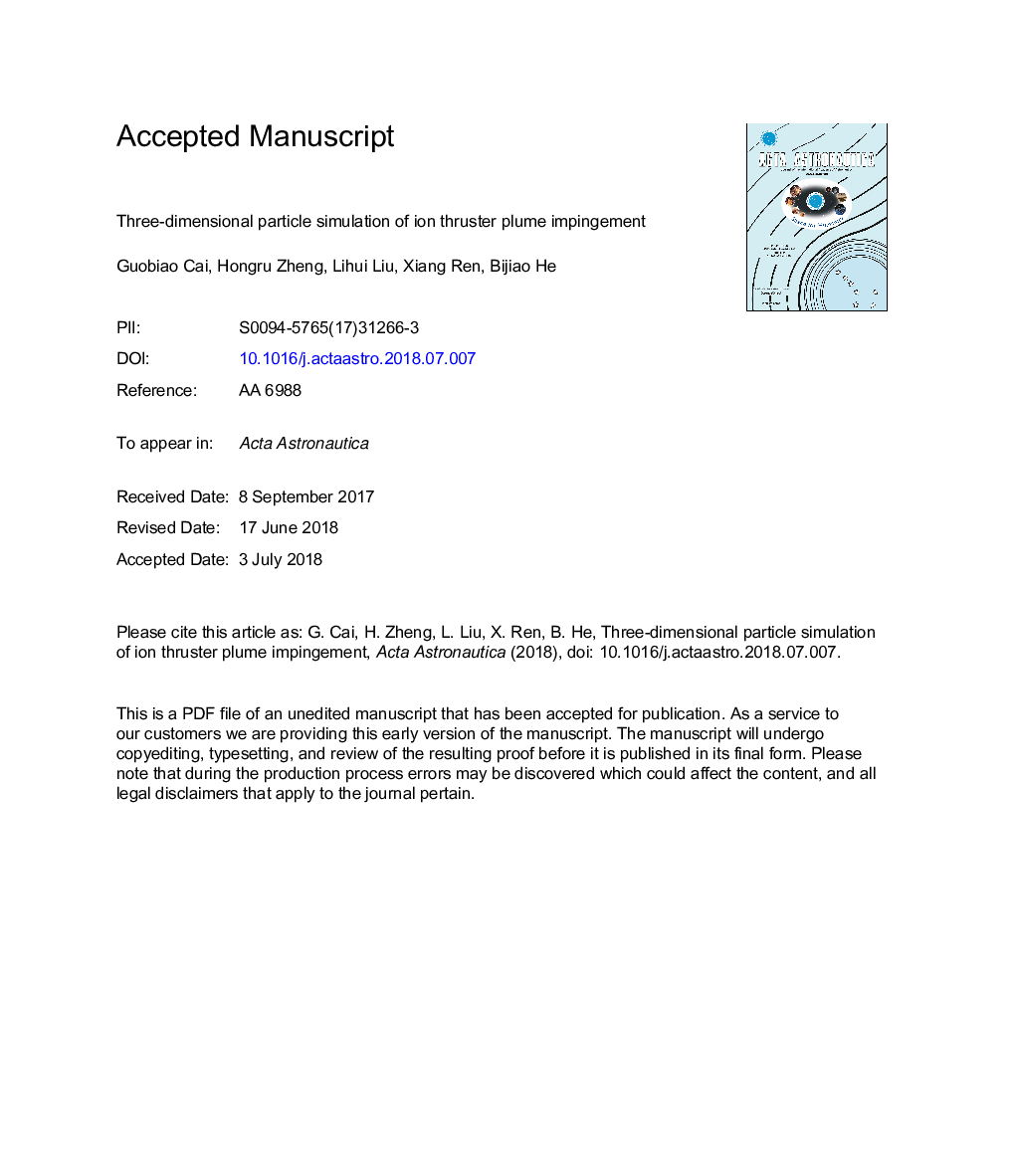| Article ID | Journal | Published Year | Pages | File Type |
|---|---|---|---|---|
| 8055439 | Acta Astronautica | 2018 | 22 Pages |
Abstract
The interaction between the high-energy particles in the plume and the spacecraft surfaces will produce interference torque that affects the operating state of the spacecraft in orbit. The thrust of an electric propulsion system is quite small, so it is difficult to be measured directly. The Vacuum Plume Laboratory (VPL) measured the LIPS-200 type ion thruster plume force in an order of 10â3N using a fully elastic micro thrust measuring device. In this paper, the particle in cell (PIC) method and the direct simulation Monte Carlo (DSMC) method are employed to analyze the three-dimensional plasma environments under specified experimental conditions. The Maxwell model is used to calculate the plume force on a 300â¯mm diameter plate. Simulation results of the plume force give good agreements with the experimental data. Moreover, the effects of the 300â¯mm diameter aluminium plate on the flow field in vacuum conditions are analyzed. The results show that the number density of atoms is greatly increased before the plate, which has a further impact on the distribution of charge exchange ions (CEX). The enhanced CEX ions moving towards the solar battery panels or sensitive optical components may cause possible damage or interference, which should be avoided by the designers.
Keywords
Related Topics
Physical Sciences and Engineering
Engineering
Aerospace Engineering
Authors
Guobiao Cai, Hongru Zheng, Lihui Liu, Xiang Ren, Bijiao He,
